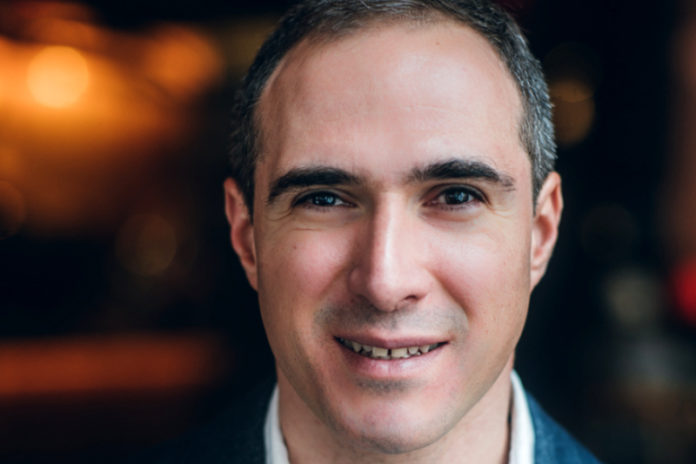Fireblocks – a blockchain-based platform for moving, storing, and issuing digital assets in the finance industry – appears to be on a roll. After raising US$310 million in Series D funding last year, it recently amassed an even larger US$550 million in its Series E round.
The startup’s software and APIs enable cryptocurrencies and financial institutions to manage treasury operations, access decentralised finance (DeFi), and provide direct custody of digital assets. What sets Fireblocks apart is its network where customers can transact with each other using various types of blockchains and tokens.
Frontier Enterprise recently got in touch with Fireblocks CEO and co-founder Michael Shaulov and asked him about a range of topics, including what’s running under the hood of the Fireblocks platform, the growth of digital banking in Asia-Pacific, and how he got started in the business.
The digital bank industry in APAC is currently booming. What do you think are the factors that influenced this growth in the region?
In April 2020, Fireblocks expanded into Asia with offices in Singapore and Hong Kong, and now a quarter of its customers are based in Asia.
According to McKinsey, the share of consumers in Asia-Pacific emerging markets using digital banking reached 88% in 2021. The Asia-Pacific market has always led the way in digital and mobile payment adoption, so in many ways, the current boom in the digital banking and financial services industry really is just fintech companies catching up to meet consumer demand.
Could you talk to us about the technology behind Fireblocks’ digital asset operations platform? How is Fireblocks leveraging multi-party computation and Intel’s SGX chip-level isolation technology?
Fireblocks uses MPC (multi-party computation) and Intel SGX to protect users’ private keys, deposit addresses, and API keys in a “Secure Transfer Environment”. This is where the execution of sensitive business logic takes place, such as transaction signing for large withdrawals.
The combination of MPC with hardware isolation creates a multi-layer security solution for API keys across cloud and on-prem deployments, and is the safest way to store and authenticate API keys and credentials.
You were once part of the Israeli Intelligence Corps’ cyber command. What specific lessons learned there are you able to apply in your technology career? What was the most interesting part of that experience?
I spearheaded the mobile security field in the Israeli Intelligence Corps’ elite military technological unit. This experience prepared me to co-found my first venture, Lacoon Mobile Security, which was later acquired by Check Point for US$100 million.
During that time, I was tapped to help investigate a hack by North Korea’s Lazarus Group that stole US$7 million from Bithumb, a South Korea Exchange. This was my first encounter with the cryptocurrency asset class, and from this experience, I saw the potential of this nascent technology to reshape our world, the way mobile did.
However, from this incident, I also saw first-hand that it needed proper security and infrastructure to succeed.
You once said Fireblocks’ goal is to make every business a crypto enterprise. What does that mean?
We believe that soon every business will become a crypto business. It does not mean that every business will launch its own token, but that in some form or another, each business will be touched by cryptocurrency and blockchain technology — whether we are talking about purchase order systems, or even simple everyday activities like online shops, games, and social media networks adding payment rails.
Because we believe that crypto adoption is inevitable, our goal here at Fireblocks is to provide the tools these companies need to make that transition as smooth and secure as possible. In December 2022, Fireblocks added zero-knowledge proofs and universally composable security to further reinforce the security of the protocol so that co-signers can’t be compromised.
How and why did you start Fireblocks? What were the early years like? How did its leadership come together?
With the increased interest in digital assets, we saw an opportunity to create a new product and service that would meet the demand of today’s consumers. As more people start to enter into the crypto ecosystem, businesses are going to need a higher level of security that provides solutions to ensure they are offering their customers the best experience.
Digital asset infrastructure is still in its infancy stage, but that means there is still room to grow. We’ve seen several DeFi hacks, and the bigger this market becomes the better security there needs to be to protect customers. We believe in the next three to five years the landscape of this industry will be determined by how corporates, brands, and the mainstream audience want to use and interact with digital assets.
How do you envision digital asset security will evolve within the next three to five years? How has the increased need for digital transformation (which was influenced by the pandemic) affected today’s digital asset infrastructure?
Digital asset security will become more and more important in the next half-decade. According to Finder, just 11.4% of the world owns crypto — so there’s still a lot of room to grow. In order for digital asset businesses to scale to meet adoption, they need security solutions that are easy to use and can be customisable to fit any workflow and operation.
Fireblocks offers a fully decentralised self-custodial solution alongside a platform for plugging into the biggest network of liquidity in crypto. We believe that the customers that use Fireblocks will continue to diversify into many new categories as new tools become available for brands and enterprises to set up, manage and automate payments processes.
















